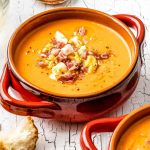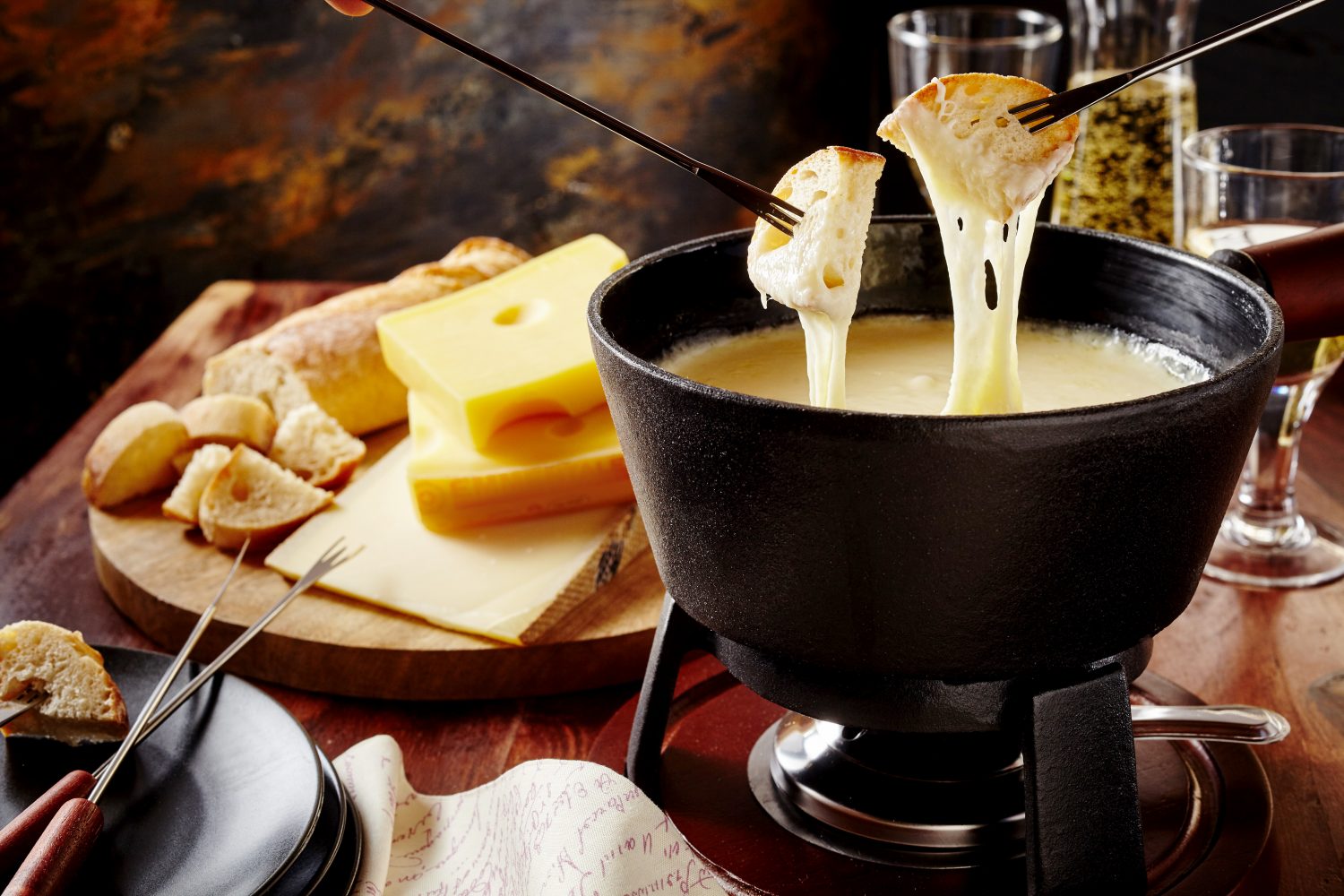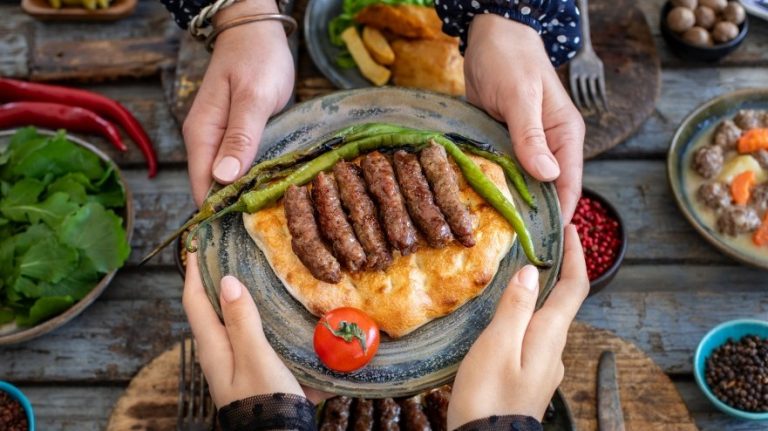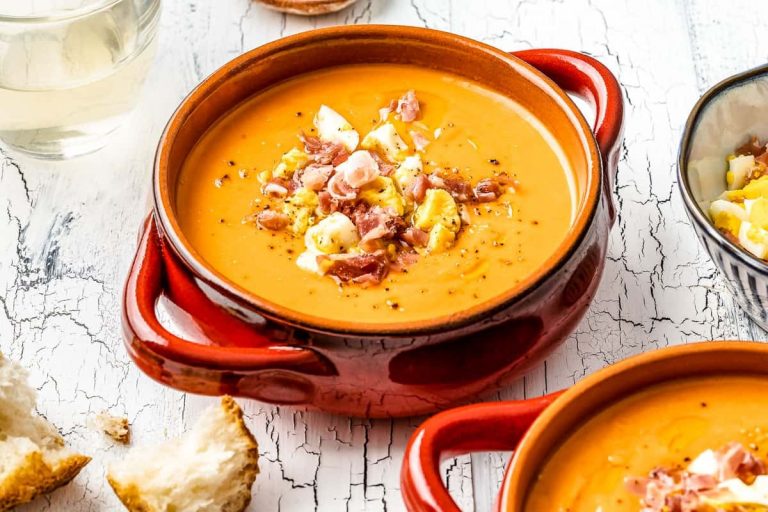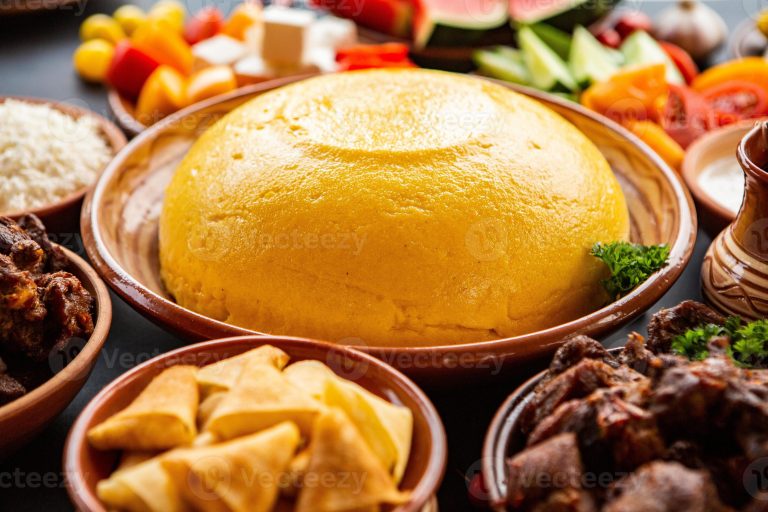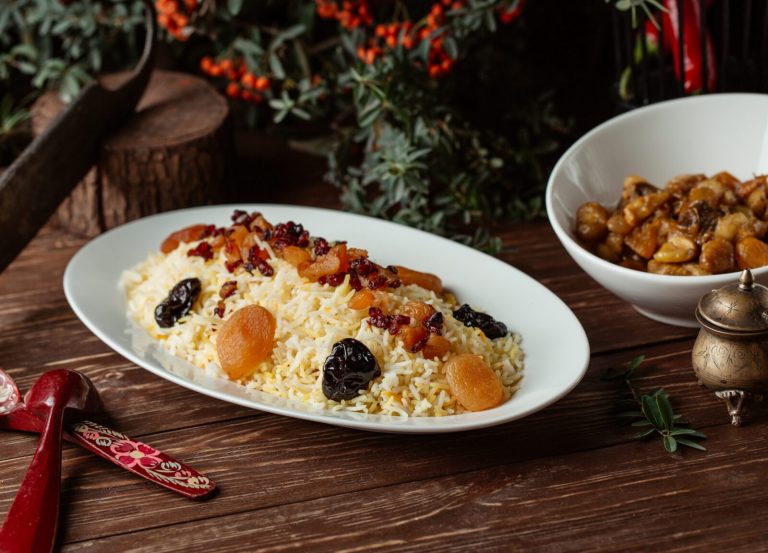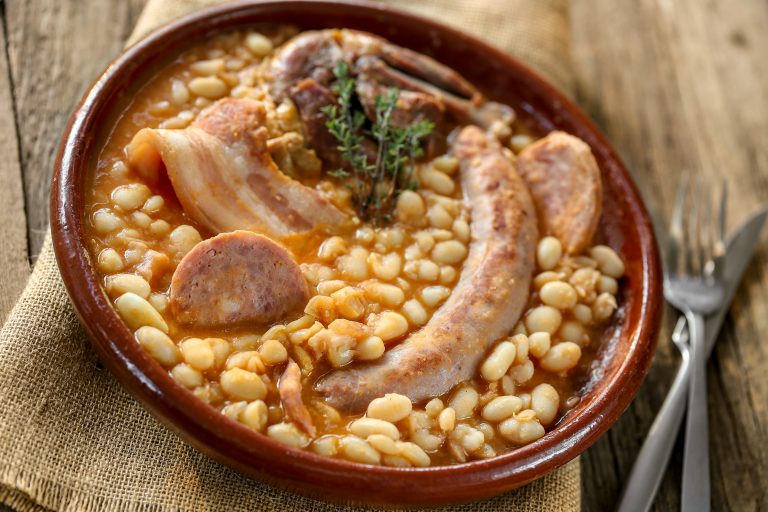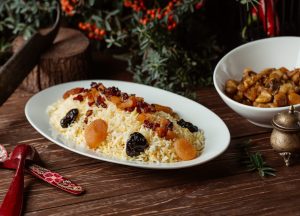In the snow-capped mountains of Switzerland, where winter months are long and provisions once needed to sustain families through isolating snowfalls, necessity birthed one of the world’s most beloved communal dining experiences. Fondue, from the French word “fondre” meaning “to melt,” emerged as an ingenious solution to a practical problem: how to make hardened cheese and stale bread palatable during the barren winter months.
What began as humble sustenance for peasants and farmers transformed over centuries into Switzerland’s national dish—a symbol of Swiss hospitality, togetherness, and Alpine tradition that would eventually captivate the world.
The Classic Swiss Cheese Fondue

While contemporary fondue has evolved to include varieties like chocolate, oil, and broth, the classic Swiss cheese fondue (fondue neuchâteloise or fondue moitié-moitié) remains the most iconic. Its brilliance lies in its apparent simplicity, though achieving the perfect consistency requires attention to specific techniques and ingredients.
The Essential Ingredients
The traditional Swiss cheese fondue consists of:
- Cheese Blend: Typically equal parts Gruyère and Emmental. Gruyère provides rich, complex flavor while Emmental contributes excellent melting properties. Some regional variations incorporate Appenzeller, Vacherin Mont d’Or, or Tilsiter.
- White Wine: A dry, high-acid Swiss white wine like Fendant (Chasselas) helps break down the proteins in cheese for smooth melting and adds brightness to counter the richness.
- Kirsch: This clear cherry brandy (Kirschwasser) adds subtle fruit notes and helps prevent the cheese from separating.
- Garlic: A clove rubbed around the pot (caquelon) or minced directly into the mixture provides aromatic depth.
- Cornstarch: A small amount helps stabilize the emulsion and prevent separation.
- Seasonings: Freshly ground pepper and a hint of nutmeg enhance the flavor profile without overwhelming the cheese.
- Bread: Day-old crusty bread cut into cubes with each piece containing some crust provides the ideal dipping vessel—substantial enough not to fall apart when speared and dipped.
The Sacred Technique
The preparation of fondue follows an almost ritualistic process:
- A heavy earthenware pot (caquelon) is rubbed thoroughly with a cut clove of garlic.
- The white wine is gently heated (never boiled) in the pot.
- Cheese, grated and tossed with cornstarch, is gradually added handful by handful, stirring constantly in a figure-eight pattern until completely melted.
- Kirsch and seasonings are incorporated once the cheese has fully melted.
- The pot is transferred to a tabletop réchaud (portable burner) that maintains a gentle simmer throughout the meal.
The resulting texture should be smooth and velvety—neither too thick nor too thin—so the cheese forms a perfect coating on the bread without running off or becoming stringy.
Regional Variations: A Tale of Four Languages
Switzerland’s multilingual and multicultural character is reflected in regional fondue variations, each showcasing local cheeses and traditions:
Fondue Moitié-Moitié
The “half-and-half” version from the French-speaking region typically contains equal parts Gruyère and Vacherin Fribourgeois. This combination creates a particularly creamy consistency and is especially popular in western Switzerland.
Fondue Neuchâteloise
From the Neuchâtel region, this version emphasizes Gruyère cheese (often using a higher proportion than other varieties) and typically includes a more pronounced amount of Kirsch.
Appenzeller Fondue
From the German-speaking eastern region, this variety incorporates Appenzeller cheese, known for its herbal brine wash that gives it a distinctive spicy flavor.
Innerschweizer Fondue
Central Swiss versions often include Sbrinz, an extra-hard cheese similar to Parmesan that’s been produced in Switzerland for centuries. This creates a more intensely flavored fondue.
Fribourgeoise
In its purest form, this variation uses only Vacherin Fribourgeois cheese, requiring no wine as this cheese melts beautifully on its own. The result is exceptionally creamy and rich.
Tomato Fondue (Valais)
From the mountainous Valais region, this variation incorporates tomato paste or purée, giving the fondue a tangy flavor and distinctive color.
The Ritual of Fondue: More Than Just a Meal
Fondue transcends mere sustenance to become a social institution with its own set of traditions, etiquette, and cultural significance. The communal nature of sharing from a single pot transforms dinner into an event that strengthens bonds and creates memories.
The Equipment
Proper fondue requires specific equipment:
- Caquelon: The heavy earthenware pot, traditionally with an enameled interior, distributes heat evenly and maintains temperature.
- Réchaud: The portable burner, typically fueled by a small alcohol or gel flame, keeps the fondue at the perfect consistency throughout the meal.
- Fondue Forks: Long-handled forks with color-coded ends help diners identify their utensils and reach the pot comfortably.
- Bread Basket: A substantial supply of cubed bread is essential—experienced hosts know to prepare more than seems necessary.
Fondue Etiquette and Traditions
The social aspects of fondue have generated numerous traditions and rules:
- The Figure-Eight Stir: Diners should stir in a figure-eight pattern when dipping to maintain consistency.
- No Double-Dipping: Once bread is bitten, it doesn’t return to the pot—a rule as much about hygiene as etiquette.
- The Lost Bread Penalty: Should a man lose his bread in the pot, tradition dictates he buys a round of drinks. Should a woman lose hers, she must kiss her neighbors.
- La Religieuse (The Nun): The caramelized crust that forms at the bottom of the pot is considered a delicacy, often reserved as a special treat after the meal.
- Accompanying Drinks: Traditional wisdom advises against cold water with fondue (claiming it causes the cheese to form a ball in the stomach). Instead, hot tea, white wine, or kirsch are traditional accompaniments.
Beyond Bread: Modern Fondue Accompaniments
While purists maintain that only bread should accompany cheese fondue, contemporary Swiss tables often feature additional dipping options:
- Boiled Potatoes: Small, firm potatoes provide a neutral base that showcases the cheese flavor.
- Apple Slices: The tartness of green apples cuts through the richness of the cheese.
- Pickled Vegetables: Cornichons (small pickled gherkins) and pickled onions offer palate-cleansing acidity.
- Cured Meats: Dried sausage or cured ham can be wrapped around bread cubes for an additional layer of flavor.
- Raw Vegetables: Bell peppers, broccoli, and cauliflower add color, nutrition, and textural contrast.
While these additions may not be strictly traditional, they reflect the evolving nature of this beloved dish in contemporary settings.
Fondue’s Journey from Alpine Necessity to Global Phenomenon
Fondue remained primarily a regional specialty until the 1930s when the Swiss Cheese Union (Schweizerische Käseunion) began promoting it as a national dish to increase cheese consumption. Their marketing campaign proved remarkably successful, establishing fondue as Switzerland’s national dish both nakbon99 domestically and internationally.
The 1964 New York World’s Fair featured fondue at the Swiss Pavilion, introducing many Americans to this communal dining experience. The timing coincided perfectly with America’s growing interest in international cuisine and entertaining at home. By the 1970s, fondue pots had become popular wedding gifts, and fondue parties were a staple of sophisticated home entertaining throughout Europe and North America.
While fondue’s popularity as a fad eventually waned in some countries, it has remained a constant in Swiss culture and has experienced periodic revivals internationally. Today, it’s recognized globally as a comfort food classic that brings people together, particularly during the winter months.
Fondue in Contemporary Culture
In modern Switzerland, fondue retains its cultural significance while adapting to contemporary tastes and contexts:
Winter Sports Tradition
Skiers and snowboarders in the Swiss Alps often enjoy fondue at mountainside restaurants after a day on the slopes—the perfect warming reward for outdoor exertion in cold weather.
Fondue Chinoise and Other Variations
While cheese fondue remains the most iconic, Swiss dining has embraced other fondue variations:
- Fondue Chinoise: Thin slices of meat cooked in hot broth
- Fondue Bourguignonne: Meat cubes cooked in hot oil
- Chocolate Fondue: Melted chocolate for dipping fruits and other sweets
Fondue To-Go
In Swiss cities, specialized vendors now offer fondue packets designed for picnic settings or easy preparation at home, making this once-special-occasion food more accessible for casual dining.
Restaurant Culture
Specialty fondue restaurants called “stubli” attract both tourists and locals, particularly in winter months, serving various regional fondue styles alongside other Swiss specialties.
The Perfect Cheese Fondue Recipe
For those inspired to create this Swiss classic at home, here is a traditional recipe for Fondue Moitié-Moitié that serves 4 people:
Ingredients:
- 400g Gruyère cheese, grated
- 400g Emmental cheese, grated
- 1 garlic clove, peeled and halved
- 300ml dry white wine (preferably Swiss Fendant)
- 1 tablespoon cornstarch
- 2 tablespoons Kirsch
- Freshly ground black pepper
- A pinch of grated nutmeg
- 2 loaves of day-old crusty bread, cut into 2cm cubes
Method:
- Rub the inside of a heavy fondue pot (caquelon) thoroughly with the cut sides of the garlic clove.
- Pour the wine into the pot and heat over medium heat until small bubbles form (but do not boil).
- Mix the grated cheeses in a bowl and toss with the cornstarch to coat evenly.
- Reduce the heat to low and gradually add the cheese mixture by the handful, stirring constantly in a figure-eight motion with a wooden spoon until each addition is completely melted before adding more.
- When all the cheese has been incorporated and the mixture is smooth, stir in the Kirsch, pepper, and nutmeg.
- Transfer the pot to a tabletop burner adjusted to keep the fondue gently bubbling throughout the meal.
- Serve immediately with bread cubes for dipping, ensuring each piece speared has some crust for stability.
Conclusion: The Enduring Comfort of Swiss Fondue
From its humble origins as a way to make hardened cheese and stale bread palatable during harsh Alpine winters, fondue has evolved into an internationally beloved symbol of conviviality and comfort. Its genius lies not just in its delicious simplicity but in how it transforms a meal into a shared experience that brings people together around a common pot.
In an era of individual portions and rushed meals, fondue invites us to slow down, engage with one another, and participate in a communal dining tradition that has stood the test of time. Whether enjoyed in a rustic chalet after a day of skiing, at a family gathering during the winter holidays, or as the centerpiece of a dinner party among friends, Swiss fondue continues to warm both body and spirit with its golden, bubbling embrace.
As the Swiss themselves might say as they raise their long-handled forks in a toast: “À la bonne vôtre!” (To your good health!)









